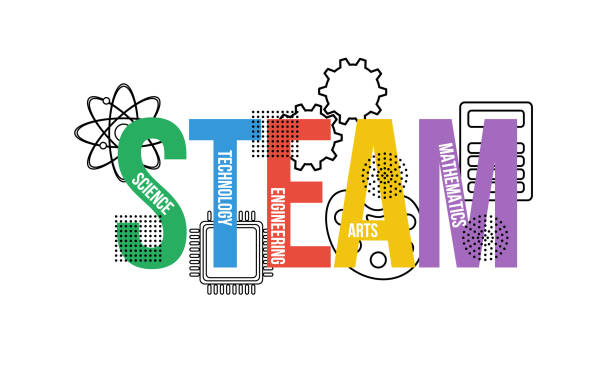
STEM High Schools: Could This Boost Your Future?
Posted July 30, 2019, 12:00 pm by
Every October, the Mississippi School for Mathematics and Science in Columbus hosts a Science Carnival. Students at the two-year residential school dress in white lab coats and conduct scientific experiments in chemistry, biology and physics for more than 1,000 elementary grade students from nearby schools. It’s just one of the ways the school provides outreach to other teachers and students in the hope that younger children will become excited about the possibilities of science.
MSMS is one of a growing number of schools to focus on STEM (science, technology, engineering and mathematics). STEM schools provide innovative learning experiences that help develop critical thinking, problem-solving and collaboration. Students interested in researching STEM schools can find them through TeenLife.com, as well as the National Consortium of Specialized STEM Schools and The Connectory.
“Our students generally are inquisitive and curious,” says MSMS executive director Germain McConnell. “They embrace challenges and don’t give up easily.”
One of the hallmarks of magnet schools like MSMS is that the teachers don’t give students the answers. Instead, they provide the tools for the students to arrive at their own conclusions.
“They can’t be afraid to think out of the box,” McConnell says. “They have to be critical thinkers, and we are constantly reinforcing those things. We give them opportunities to solve real-world problems.”
Devon Matheny plans to major in biomedical engineering with a pre-med track. She says that MSMS taught her to expand her horizons and embrace diversity.
“Being around like-minded individuals makes it possible to have intelligent conversations about subjects we love to talk about, whether it be STEM, art or Netflix movies,” she says.
Another innovative program at the school is “Tales from the Crypt,” an award-winning class that combines history, research and drama. Students research the life of someone buried in historic Friendship Cemetery, write a research paper and then act out stories from that person’s life for up to 4,000 visitors every year at the cemetery.
Harpreet Singh, a senior, was one of the students who auditioned and was chosen for a part. Singh was also a camp counselor during the school’s summer camp for younger students this year. He plans to major in either engineering or prelaw and enjoys being surrounded by students who share his drive for excellence. For him, the residential experience created tight bonds with other students.
Fellow student Keely Brewer agrees. She hopes to become a teacher and plans on cherishing every minute of her senior year at MSMS, which she says has been life-changing.
LOOKING FOR STEM PROGRAMS? DOWNLOAD OUR GUIDE!
“As an MSMS student, you arrive on Move-In Day typically not knowing anyone else on campus,” she says. “By the end of your first year, however, you’re surrounded by a family that you didn’t even know you needed before.”
Not all STEM-focused schools are residential. At Thomas Jefferson High School for Science and Technology in Alexandria, Va., students in Grades 9 through 12 travel up to two hours to commute to school. While some STEM schools use a lottery system for enrollment, TJ has a competitive entrance exam.
“Students who attend TJ have a great thirst for knowledge and learning, but STEM is not to the exclusion of other really enriching humanities programs,” says principal Ann Bonitatibus. “There is a plethora of athletics and clubs and other activities, so our students have a really vast range to draw on.”
Even though Thomas Jefferson isn’t residential, it still fosters the same family feeling of community, she says. Nicholas Begotka, president of the Student Government Association, agrees.
“The best part about being a TJ student is the community,” he says. “When I came to TJ, I found myself surrounded by diverse yet like-minded individuals who I shared something in common with: an interest in academics. I finally felt like I fit in. My peers have taught me so much about their culture, their academic interests and their talents beyond STEM. Even though TJ has been challenging, my peers have always had my back.”
Thomas Jefferson has a marine lab where students can grow oysters and conduct experiments with sophisticated equipment. There is a planetarium, laser technology and machines for manufacturing artificial DNA.
Not only are the course offerings different, but the manner in which learning occurs is also innovative. Instead of silo teaching one subject at a time, there are interdisciplinary teams so humanities teachers in English and history, for example, work collaboratively with science and math teachers.
“The other thing that makes TJ unique is the international partnerships,” Bonitatibus says. “We have sister schools in many other countries. We host visits from those schools for students, and then our students and teachers will have opportunities to go overseas as well. Those international connections help us develop our students as global citizens.”
At Maine School of Science and Mathematics in Limestone, Luke Shorty is not only the executive director but also an alumnus who graduated in 1998. He says the four-year residential school’s location in northern rural Maine fosters an amazing learning community.
Learning happens all over campus, he says. “Our classes go from 8:30 in the morning until 9 at night some nights. It’s a college schedule, so if you don’t have a class, that time is yours.”
The school offers classes in molecular calculus, modern physics, computer science, algorithms and programing, web development and astronomy. And a strong humanities department means students learn how to communicate what they have learned. There is also a greenhouse for the study of plant biology and genetics.
“We’ve got a nice little maker space so kids are able to tinker and take things apart and put them back together and work on projects they may be passionate about, whether it's robotics or 3-D printing,” Shorty says.
Blog Categories
- Career Advice
- College Admissions
- Colleges & Universities
- Financial Aid and Scholarships
- For Counselors
- For Parents
- For Students
- Gap Years
- Mental Health and Wellness
- Online Learning
- Performing and Visual Arts
- STEM Majors and More
- Summer Programs
- Teen Volunteering
- Trade & Vocational Schools
- Tutoring & Test Prep

Organization with listings on TeenLife? Login here
Register for Free
We’re here to help you find your best-fit teen-centered academic and enrichment opportunities.
Forgot Password
"*" indicates required fields








